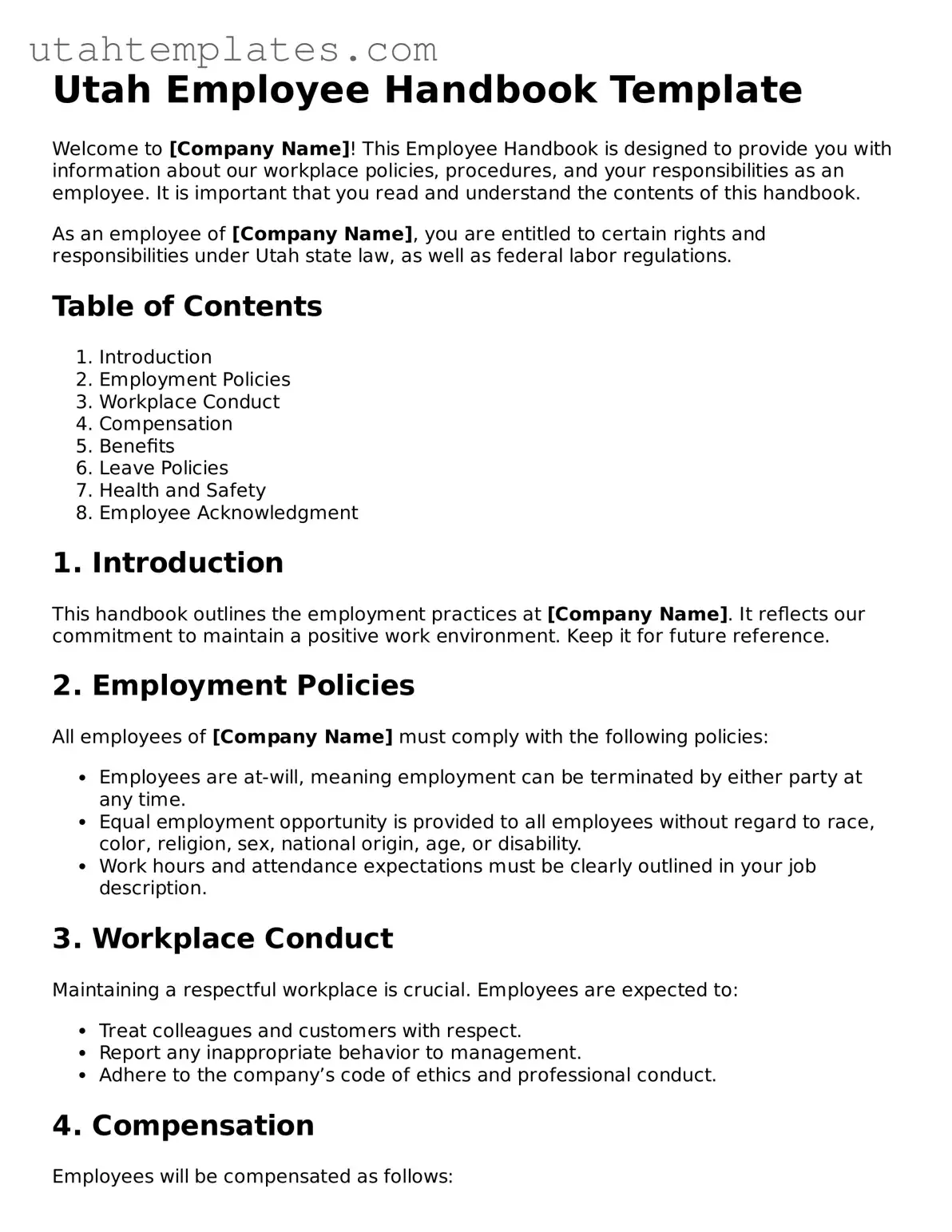Utah Employee Handbook Template
Welcome to [Company Name]! This Employee Handbook is designed to provide you with information about our workplace policies, procedures, and your responsibilities as an employee. It is important that you read and understand the contents of this handbook.
As an employee of [Company Name], you are entitled to certain rights and responsibilities under Utah state law, as well as federal labor regulations.
Table of Contents
- Introduction
- Employment Policies
- Workplace Conduct
- Compensation
- Benefits
- Leave Policies
- Health and Safety
- Employee Acknowledgment
1. Introduction
This handbook outlines the employment practices at [Company Name]. It reflects our commitment to maintain a positive work environment. Keep it for future reference.
2. Employment Policies
All employees of [Company Name] must comply with the following policies:
- Employees are at-will, meaning employment can be terminated by either party at any time.
- Equal employment opportunity is provided to all employees without regard to race, color, religion, sex, national origin, age, or disability.
- Work hours and attendance expectations must be clearly outlined in your job description.
3. Workplace Conduct
Maintaining a respectful workplace is crucial. Employees are expected to:
- Treat colleagues and customers with respect.
- Report any inappropriate behavior to management.
- Adhere to the company’s code of ethics and professional conduct.
4. Compensation
Employees will be compensated as follows:
- Pay periods occur on a bi-weekly basis.
- Overtime is paid at 1.5 times the regular hourly rate for hours worked beyond 40 in a week.
- All deductions are made in compliance with state and federal laws.
5. Benefits
As a part of our compensation package, [Company Name] offers a range of benefits, including:
- Health, dental, and vision insurance.
- Retirement savings plans with company match.
- Paid time off including vacation and holidays.
6. Leave Policies
Employees may request leave under the following circumstances:
- Personal or family illness.
- Medical emergencies.
- Pregnancy or parental leave.
7. Health and Safety
For a safe working environment, [Company Name] requires:
- Regular training on health and safety protocols.
- Prompt reporting of unsafe working conditions.
- Compliance with safety equipment usage.
8. Employee Acknowledgment
All employees must sign an acknowledgment of understanding for the policies outlined in this handbook.
Please sign below:
_____________________________ Date: _____________
Thank you for being a vital part of [Company Name]. Together, we can create an engaging and productive workplace environment.
